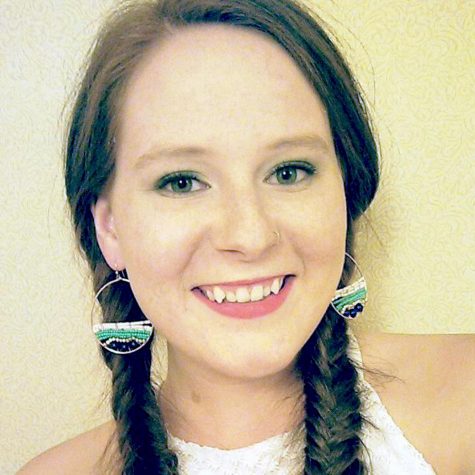Say hello to sunscreen, not to burns
March 18, 2015
I am a red head. It should go without saying that I am on the paler side. I burn so easily and often that I’ve gotten used to the feeling, which means my tolerance for sunburns has gone up.
Even though I don’t feel like the burns are severe, all sunburns need to be treated as such.
Nice weather is coming up, which means spending a lot of time outside. It is time to stock up on sunscreen.
I always hear people saying that they don’t want to wear sunscreen because they want to get a tan. Tanning is due to the exposure of ultraviolet (UV) radiation. These rays are very harmful to the skin. UV radiation is linked to premature skin aging and skin cancer.
Don’t even try to say that tanning beds are safer for your skin than being in real sunlight. People who use indoor tanners are 74 percent more likely to develop melanoma than those who have never used indoor tanning.
I’m not saying to completely avoid all sunlight. Sunlight is needed to be healthy. Even though you should wear sunscreen a majority of the time when outdoors, some doctors say to go out in the sunlight for 20 minutes (30 maximum) without sunscreen at least once a week.
This does depend on location, how easy you burn and other factors. However, it is important because this is the best way to produce vitamin D. Due to overuse of sunscreen, about 40 to 60 percent of Americans are deficient in vitamin D, which can cause health problems.
There is a fine line between overuse and underuse of sunscreen and it is different for everyone. For example, I know that I cannot use anything less than SPF 30 or else it is just like not using sunscreen at all. I also know that I need to reapply every couple of hours.
One myth that people have latched on to is that those with darker skin don’t burn and therefore don’t need any sunscreen. While it is true that darker-skinned people don’t get burned as easily, it is still possible. This means everyone needs to wear sunscreen when being outside for long periods of time.
Most dermatologists suggest that everyone should wear SPF 15 daily. This level of SPF can be found in different types of lotion, which means you wouldn’t have to actually put on sunscreen to be protected.
However, if you have a history of skin cancer or burn easily, then you should consider wearing SPF 30 daily.
To clear up any confusion, SPF 30 doesn’t mean it protects your skin twice as much as SPF 15. In fact, SPF 30 only protects your skin about 4 percent better than SPF 15 but that 4 percent could mean the difference between a slight sunburn and a severe sunburn.
Another myth is that you only have to wear sunscreen during the summer.
I can tell you from personal experience that it is entirely possible to get burned in the winter. About 80 percent of the harmful UVA rays get through on a cloudy, overcast day.
It is also imperative to make sure you are getting all of the exposed spots covered by sunscreen.
Story time: one time I didn’t put sunscreen on the bottom of my feet and I laid on my stomach in the sun. I fell asleep and when I woke up, I got to my feet and felt instant pain. That’s right, the bottoms of my feet got sunburned.
While that won’t happen very often to a lot of people, just be smart. If you like to sleep on your stomach and might fall asleep outside for a few hours, prepare for the possibility that your feet might get burned.
Did you get burned over mid-term break? Drink a lot of water. Most likely, when you are sunburned, you are also dehydrated. Water will keep you hydrated and help get rid of the sunburn quicker.
Use calming lotions to help with the pain. I like to use straight aloe vera gel to soothe the burn. You can also take acetaminophen (Tylenol) or ibuprofen to help with pain and swelling.
Stay smart about sun exposure.
Now, go outside and enjoy the sunshine.









Block Island Organics • Mar 21, 2015 at 11:03 am
Thanks for stressing the importance of sunscreen and sun protection in general. It’s so important to do.
One thing we’d add, make sure you choose a sunscreen labeled “broad spectrum” (our sunscreens for example). Only sunscreens that protect against both UVA and UVB rays are allowed to be labeled that way. Since both cause skin damage, it’s important to get full protection.